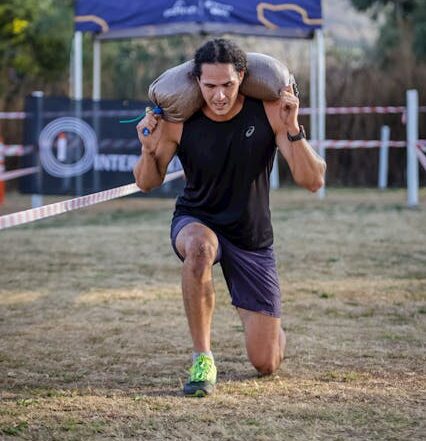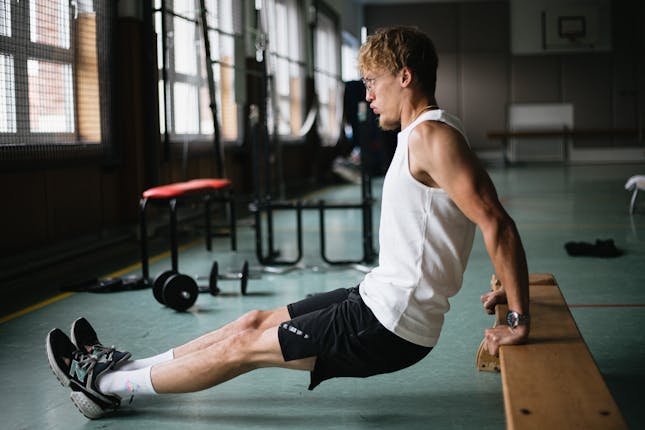
If you’re like me, getting ready for an incredible outdoor adventure means more than just packing the right gear; it’s about preparing your body as well.
You’re going to find out about how your hiking ambitions affect the fitness preparations you need to undertake. Let me tell you, this isn’t just about walking a few trails; it’s about being ready for anything the wilderness throws your way. Whether it’s a serene day hike or an ambitious multi-day journey, we’re going to explore what it takes to get in top hiking shape.
Understanding your hiking fitness needs is critical. The starting point is always knowing the nature and complexity of the hikes you’ll be tackling. That’s going to include assessing terrains, elevations, distances, and not to forget, the load you’ll be carrying on your shoulders. This section is here to help you chart out a hiking fitness plan that aligns precisely with your hiking aspirations – ensuring your body is just as ready for the challenge as your spirit.
Now, as we look at tailoring a fitness strategy to your personal needs, you’ll see how this sets the foundation for our next discussion. The core elements of a solid training plan – those non-negotiable components that are going to pave the way to your hiking success – are coming up. I’m going to delve into each crucial component, from heart-pumping cardio to muscle-building strength training. But first things first, let’s get a clear map of what your body needs to conquer those trails. Before we start, I am an avid hiker, not a fitness trainer and you should consult your doctor before starting any fitness program.
The Four Pillars of A Hiking Fitness Regimen
Understanding the different components that comprise a well-rounded hiking fitness regimen is like knowing what to pack for a complex trail – miss out on one thing, and the entire hike could become a struggle. I’m going to walk you through what I call the ‘Four Pillars of A Hiking Fitness Regimen’ that will keep you strong and steady on the path.
The Importance of Cardio Training
The first pillar, cardio training, is non-negotiable. It builds the endurance you’ll need to handle those breath-taking (quite literally!) high-altitude hikes. Aiming for workouts that push your current fitness limits is key. Here’s a tip: try a training routine that escalates your heart rate and challenges you progressively. Simulate hiking conditions as much as you can – yes, that means sometimes walking on an incline with a weighted pack on your back.
The Importance of Strength Training
Moving on to the second pillar, strength training for hiking fitness. Your legs are the workhorses on a hike, so lower body strength is crucial. Lunges and squats are your best friends here. Start with lighter weights and progressively increasing the load. It’s important to track your progress meticulously, focusing on weights and repetitions but never at the expense of proper form. And it’s not just legs – beefing up your upper body strength is essential for carrying backpacks or kid carriers.

On more challenging hikes, upper body strength is required to push yourself up over large boulders or steep inclines up. Here is where, bicep curls, tricep kickbacks and dips come into play. Along with side lateral raises. Again starting with light weights and increasing weights as you build strength. Even the old trusty push up works. Starting on your knees and work your way to your feet.
I recently did a challenging hike where the climb out of the gorge was steep and close to vertical in some sections. Believe it or not, this is where my upper body strength was greatly needed, I am short and in some instances finding a footing within my reach was tricky. I had to rely on my upper body strength to help me push up. It was a wake up call that I needed, if I want to participate in more challenging walks. I have now embarked on a regular upper body training routine where I use free weights and do bicep curls, tricep kickbacks and side lateral raises along with push ups and I can feel my upper body getting stronger.

Also, don’t overlook your core strength for hiking; a strong midsection ensures better balance and can significantly diminish back pain on the trails. Planking works both your arms and core. Again building up to longer times is the key. Lying leg raises and leg bridges, along with crunches and twisting crunches all help with core strength.

Why Flexability is Important
Coming to flexibility and stability, our third pillar, I can’t stress enough the significance of daily stretching. Dynamic stretches are particularly beneficial, targeting the muscles you’ll be recruiting the most during a hike. Furthermore, stability exercises are vital to hone those stabilizer muscles, helping you maintain your footing on unstable terrain – think of it as injury insurance.

By blending these components – cardio, strength training for both lower and upper body, core workouts, and flexibility exercises – into your hiking fitness strategy, you’re going to give yourself a fighting chance against the elements and the rigors of the trail. Remember, consistency is your ally here, so ensure these workouts become a staple in your life well before you hit those hiking trails.
Consistency is the Key
The fourth pillar is all about plan and consistency. Building a hiking fitness routine isn’t merely about scheduling; it’s about commitment. To help you stay the course, I recommend marking out your workout times well in advance. Keep a calendar – it can be a powerful tool for accountability. Moreover, sharing your fitness goals with friends or joining a community can provide an extra nudge of motivation. Remember, solid habits like these can take time to establish, but they are absolutely essential for success.
Getting Help
There are so many resources online to help you with training for hiking fitness. Here are a few that I have referred to over the years. If you’re unsure of what to do and have never weight trained before, engage a personal trainer for a few sessions to help you with a routine and ensure your form is correct. You can check in with them every 6 weeks or so to map your progress and adjust your routine, if necessary.
Heeding Your Body’s Signals: Recovery and Hydration
Your pursuit of a fitter version of yourself for the hiking trails isn’t just about the rigorous training sessions; it’s also about giving your body a chance to heal and hydrate. I can’t stress enough the role of relaxation and proper hydration in any fitness plan, especially one as physically demanding as preparing for hiking.
Now let’s talk about rest days. They are your body’s opportunity to rebuild and strengthen. After a day conquering hills with a weighted pack, a rest day might involve light activity such as walking or yoga. This kind of active recovery helps to prevent stiffness and can actually speed up the muscle repair process.
But rest isn’t confined to the daylight hours. Sleep plays a critical role in recovery. Research suggests that good sleep can boost performance, aid in muscle recovery, and reduce the risk of injuries. The foundation of good sleep hygiene comes from having a consistent sleep schedule, ensuring a cool, quiet, and dark environment, and steering clear of screens before bedtime.

When it comes to self-care, don’t underestimate the soothing power of an Epsom salt bath or a session with a foam roller. These practices not only promise a timeout for relaxation but also aid in decreasing muscle soreness. This approach to recovery helps ensure you’re ready for your next workout. In fact, an Epsom salt bath is my after hike ritual. It helps with muscle soreness.
Hydration is a Must
Lastly, hydration is the backbone of any hiking fitness regimen. It’s about more than quenching thirst; it’s about sustaining performance and avoiding dehydration. A good rule of thumb is to drink 8 glasses of water a day. When you’re sweating more during workouts, it’s crucial to compensate with an increased water intake.
With these recovery strategies in place, you’re safeguarding your ability to tackle training consistently. But don’t let these sessions go to waste. In the next section, I’m going to cover the importance of final thoughts to stay on track with your hiking fitness goals.
Reaching the Summit of Preparedness: Embracing the Journey
I’m here to help you navigate the final stretch of your hiking fitness journey. It’s been a road of disciplined training, strategic planning, and dedication. Remember, this isn’t just about hitting the trail; it’s about embracing a healthier, more active lifestyle that enhances your overall well-being.
Your first attempt at this fitness plan doesn’t need to be your last. You can always adjust your approach down the road, refining it as you grow stronger and more experienced. Don’t worry too much about getting everything perfect from the start. Choose something that resonates with you, and just go for it! The more you hike the fitter and stronger you will become.
Happy hiking!
I’d love to hear your feedback, leave your comments below or reach out with your success stories.

I didn’t know that you had a fitness plan to hiking! I didn’t have a fitness plan and I went just hiking like that! And my body made me feel that I wasn’t prepared enough. I just feel that you must exercise to be at your optimal shape to hike often. I’ll start hiking again, at least twice a month. And I’ll follow a regular and consistent routine to be in shape!
A hiking fitness plan is a fantastic topic, and your approach to outlining “The Steps to Fitness” is likely a valuable resource for anyone looking to prepare for hiking adventures. A structured fitness plan tailored to hiking can make a significant difference in both the enjoyment and safety of outdoor activities.
Your detailed explanation about the importance of a well-designed hiking fitness plan tells the reader that they should focus on gradual progression. Starting with basic exercises and building up strength, endurance, and flexibility over time ensures that the body adapts to the demands of hiking is appreciated.
The article is a timely and practical guide for anyone looking to get in shape for hiking. Whether you’re a beginner or an experienced hiker, following a structured plan that includes cardiovascular conditioning, strength training, flexibility, and proper nutrition can greatly enhance your hiking experience. It’s not just about being able to complete a hike but doing so with confidence, enjoyment, and minimal risk of injury.
This article really resonated with me! It’s so true that hiking is more than just walking—it’s about preparing your body for the physical challenges of the trail. I love how you broke down the four pillars of hiking fitness. The advice on flexibility and recovery, like incorporating daily stretching and hydration, is often overlooked but crucial.
Your point about consistency being key really hit home; it’s easy to forget how important it is to stick to a routine. Overall, this guide is practical and motivating, and it’s inspired me to take my hiking prep to the next level!
Wow, I always thought hiking was just about getting out on the trails! I didn’t know how important stretching and getting enough sleep were for being a good hiker. It’s cool to learn that taking care of our bodies helps us enjoy our adventures more. I can see how staying strong and flexible would make hiking easier and more fun. Thanks for sharing this helpful info! Happy hiking to everyone!